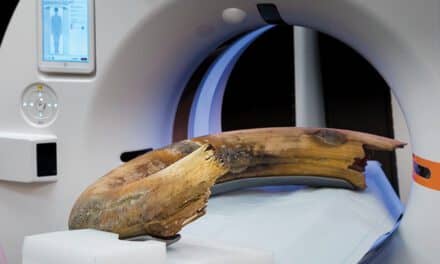 Radiologists have reconstructed 2D images into 3D images mentally for years. Now, with a boost from computers that render volumetric images in 3D, other clinicians can see what radiologists have “seen” since the first computed tomography (CT) and magnetic resonance (MR) scanners were invented.
Radiologists have reconstructed 2D images into 3D images mentally for years. Now, with a boost from computers that render volumetric images in 3D, other clinicians can see what radiologists have “seen” since the first computed tomography (CT) and magnetic resonance (MR) scanners were invented.
“We, as radiologists, are comfortable with stacking one slice after another in our minds to create a 3D representation,” says Michael Rothman, M.D., section chief of MRI, St. Luke’s Hospital and Health System (Bethlehem, Pa.) who uses a GE Medical Systems (Waukesha, Wis.) 1.5 tesla Signa Echospeed scanner. Although radiologists are accustomed to using sequential 2D images and mentally building the third dimension along the Z axis of the CT or MR slices, not all physicians experience this daily activity.
Rothman describes the significant impact that 3D images have had for the neurosurgeons in their institution. Surgical planning requires as much information as possible before a surgeon performs the first incision. By manipulating the 3D images into the plane that represents the exact planned point of entry, the surgeon develops a level of confidence that cannot be overstated in its importance.
“Our neurosurgeon is able to make smaller craniotomies, decrease intraoperative time and decrease morbidity,” says Rothman, who describes published reports from neurosurgical journals that correlate the surgeon’s comfort level in performing neurovascular surgery with speed of the operation and beneficial outcome for the patient.
Please refer to the April 2002 issue for the complete story. For information on article reprints, contact Martin St. Denis




